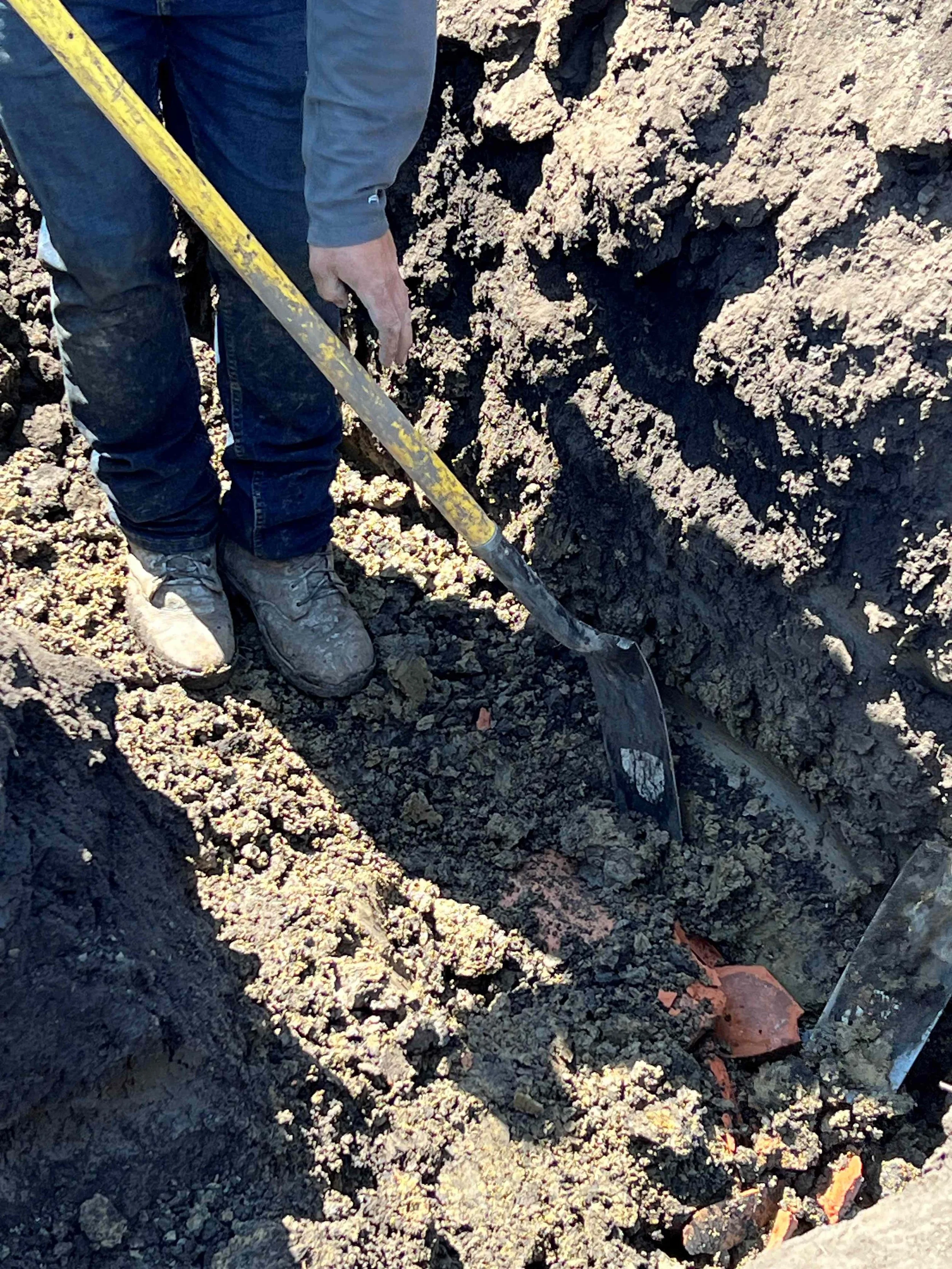Even though the Smart Wetland at Feather Prairie Farm was constructed in August 2022, it is now fully operational after another ag tile drainage line was added to it earlier this month.
For those not familiar with agricultural tile drainage, it is a system that removes excess water from the soil under farmland. Removing excess water allows for easier planting and harvesting, improved soil conditions for crop growth, and allows farmers more control over scheduling fieldwork.
The second line was installed at the west end of the wetland. It was connected to tile lines in the field south of the wetland. There were a few surprises. Seven unmapped tile lines were discovered in the process of connecting the tile main to the wetland. However, Trent, Travis, and Titus from Double S Tiling quickly connected them to the system, and soon more water was trickling into the wetland.
Here are some photo highlights of the process.
The crew started at the wetland by installing the solid outlet pipe (blue). Then they connected it to the beginning of the black, plastic, corrugated, and perforated pipe that would be buried from that location across a field and connected to the main ag drainage tile line that would supply the water that will flow into the wetland.
Bird’s eye view of the Double S crew laying perforated corrugated plastic pipe from the wetland to the main tile line in the nearby field.
The pickup truck at the top of the photo is pulling a spool of perforated, corrugated plastic tile. The tiling machine (partially parked on the grass) digs the channel and inserts the tile into that channel. The machine in the rear then pushes the earth back into the channel covering the newly deposited tile.
The crew then used a backhoe and shovels to access the original clay tile line to prepare it for connection to the newly-laid plastic tile line.
Titus and Travis connect the original clay tile system to the newly laid tile line and within minutes water was flowing into the wetland.













